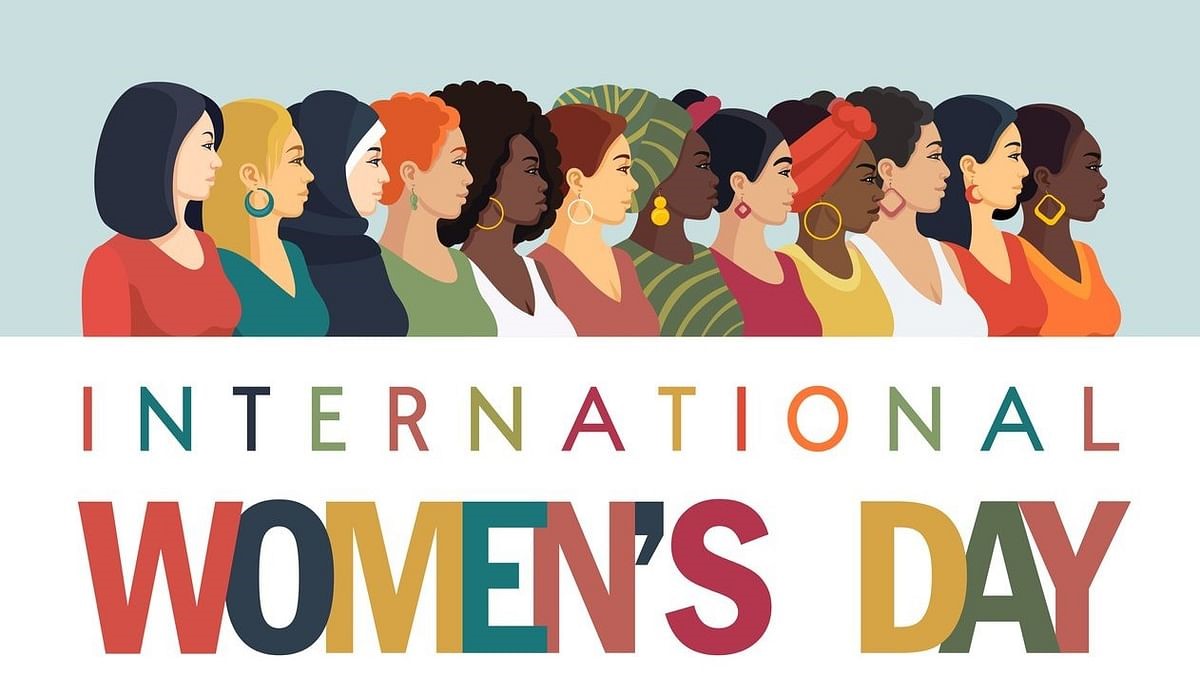
Disclaimer: Copyright infringement not intended.
Context
International Women's Day is a holiday celebrated annually on March 8 as a focal point in the women's rights movement. IWD gives focus to issues such as gender equality, reproductive rights, and violence and abuse against women.
Details
Origins of International Women’s Day
Early Beginnings:
- The first National Woman’s Day was observed in the United States on February 28, 1909, by the Socialist Party of America.
- This day commemorated the 1908 garment workers’ strike in New York City, where women protested against oppressive working conditions.
The 1908 Garment Workers’ Strike:
- Around 15,000 women participated in the historic strike, advocating for shorter work hours, better pay, and voting rights.
- The strike served as a catalyst for broader movements advocating for women’s rights and social change.
Evolution of International Women’s Day:
- Initially, Women’s Day was observed on the last Sunday of February, following the 1908 strike.
- Over time, the observance of Women’s Day expanded internationally, transcending national boundaries and becoming a global movement.
First Wave of Feminism:
- Women’s Day emerged within the context of the First Wave of Feminism, a period marked by advocacy for women’s suffrage and equal rights.
- It represented a crucial moment in the struggle for gender equality and empowerment.

Early Feminism in the US and Europe
First Wave Feminism:
- First Wave Feminism, spanning from the mid-19th century to the 1920s, marked the beginning of organized efforts for women’s rights in the Western world.
- Key issues addressed by early feminists included suffrage, equal pay, and broader gender equality.
The Seneca Falls Convention (1848):
- In 1848, Americans Elizabeth Cady Stanton and Lucretia Mott organized the Seneca Falls Convention in New York.
- This convention was the first women’s rights gathering in the United States and laid the foundation for the women’s suffrage movement.
Anti-Slavery and Women’s Rights:
- Lucretia Mott, a prominent advocate against slavery, joined forces with Stanton to advocate for women’s rights.
- The exclusion of women from speaking at an anti-slavery convention served as a catalyst for their activism.
Elizabeth Cady Stanton’s Advocacy:
- Stanton emerged as a leading feminist thinker and activist, advocating for women’s rights through speeches, writings, and organizing.
- Her famous 1892 speech, ‘The Solitude of Self,’ eloquently articulated the need for women’s autonomy and empowerment.
- Stanton argued that women deserved equal opportunities for education and self-development, emphasizing the importance of individual autonomy.
- She highlighted the necessity for women to possess knowledge and skills to navigate life’s challenges independently.
- Rejecting the notion of women’s dependence on men, Stanton emphasized the importance of self-reliance and self-sufficiency.
Emergence of Socialist Feminist Movements in Europe
- In Europe, socialist feminist movements began to gain momentum alongside the broader push for women’s rights.
- These movements were characterized by a focus on class struggle and the intersection of gender and socioeconomic inequalities.
Clara Zetkin and the International Women’s Day Proposal:
- Clara Zetkin, a prominent socialist leader from Germany, played a key role in advocating for women’s rights within the socialist movement.
- At the 1910 International Conference of Working Women in Copenhagen, Zetkin proposed the idea of establishing an International Women’s Day to promote women’s demands globally.
- Clara Zetkin was a highly regarded speaker who emphasized the importance of women’s participation in workers’ movements.
- She viewed socialist activism as essential for advancing women’s rights and achieving gender equality.
- Zetkin’s proposal for International Women’s Day received widespread support at the conference, with over 100 women from 17 countries endorsing the idea.
- The inaugural International Women’s Day was celebrated in 1911, with rallies and demonstrations held across Europe to demand women’s rights in various spheres of life.
Origin of March 8 as International Women’s Day
Russian Protests in 1913:
- Russian women protested against the possibility of World War I on February 23, 1913, according to the Julian calendar used in Russia at the time.
- Translated to the Gregorian calendar, widely accepted elsewhere, this date became March 8, which eventually became the global benchmark for International Women’s Day.
Significance of February 23, 1917:
- Another significant protest occurred on February 23, 1917, again according to the Julian calendar.
- Russian women protested against the ongoing war and shortages of food and essentials under Czar Nicholas’s regime.
Unique Nature of 1917 Protests:
- Women, who were often on the breadline and most affected by the shortages, were the core protesters during the 1917 demonstrations.
- Male revolutionaries like Leon Trotsky were surprised by the women’s disobedience, as they had expected them to wait until May, traditionally marked as Workers’ Day.
Impact on Russian Revolution:
- The protests helped galvanize public opinion against the monarchy, leading to the Russian Revolution shortly thereafter.
- The establishment of a communist state followed the revolution, and women in Russia gained the right to vote in 1917.
Global Recognition and Commemoration:
- International Women’s Day, observed on March 8, became a global celebration of women’s achievements and a reminder of the ongoing struggle for gender equality.
- In the United States, March is proclaimed as ‘Women’s History Month’ to honor the contributions of women throughout history.
.jpg)
Facts and Figures on Gender Equality in India
Population
- India's population in 2011 was 121.1 Crore, with a female population of 48.5%.
- The sex ratio (females per 1000 males) in 2011 was 943 at the all-India level, with rural and urban ratios at 949 and 929 respectively.
- Sex ratio at birth increased to 907 in 2018-20.
- The mean age at marriage slightly increased from 22.1 years in 2017 to 22.7 years in 2020.
- Female-headed households accounted for 11.5% in rural areas and 12.4% in urban areas.
Health
- The age fertility rate was highest for females aged 25-29 years in 2017.
- Crude Birth Rate in 2017 was 20.2, with a General Fertility Rate of 72.4.
- Total Fertility Rate decreased from 2.3 in 2016 to 2.0 in 2020.
- Life expectancy was 68.4 years for males and 71.1 years for females during 2015-19.
- Maternal mortality ratio decreased to 97/lakh live births in 2018-20.
- Female infant mortality rate equaled male rate at 28 per 1000 live births in 2020.
- Percentage of women with at least four AnteNatal Care visits during pregnancy was 58.5%.
- Percentage of deliveries in health institutions increased from 78.9% in 2015-16 to 88.6% in 2019-21.
- Female sterilization remained the most popular contraceptive method (37.9%).
Literacy and Education
- Female literacy rate in 2011 was 64.63%, with males at 80.9%.
- Primary level Gross Enrollment Ratio (GER) was 103.4 in 2021-22.
- Female GER at higher secondary level increased to 58.2 in 2021-22.
- Male population with at least secondary education increased to 60.0% in 2020-21.
- Only 8.3% of females aged 15 years and above completed graduation and above level courses.
- In rural India, only 48.2% of girls aged 6-14 years can read a Grade 2 level text, compared to 63.5% of boys (Annual Status of Education Report 2020).
Participation in Economy
- Worker Population Ratio (WPR) was 17.5 for rural females and 14.2 for urban females in 2017-18.
- Female LFPR remained lower than males (32.8% vs. 77.2% in 2021-22).
- The labor force participation rate for women in India was 22.3% in 2020, compared to 78.6% for men (World Bank).
- Female labor force participation has declined from 31.2% in 2011-12 to 22.3% in 2019-20.
- Average wage earnings for female workers lagged behind males. Women in India earn 19% less than men in the organized sector and 34% less in the unorganized sector (International Labour Organization).
- Female population spent more time in unpaid activities compared to males.
- 03% of bank accounts in rural areas were held by females.
- The percentage of women in senior management positions in India was 28% in 2020, up from 25% in 2019 (Grant Thornton). Despite improvements, women face barriers such as bias and discrimination in accessing leadership roles.
Political Participation
- India ranks 140th out of 156 countries in terms of political empowerment of women, according to the World Economic Forum’s Global Gender Gap Report 2021.
- Women hold only 22.5% of seats in the lower house of Parliament (Lok Sabha) and 23.7% of seats in the upper house (Rajya Sabha).
- Representation of women in Central Council of Ministers decreased from 17.8% in 2015 to 10.5% in 2019.
- Women's participation in State Assemblies was 11%.
- Only 3 out of 29 judges in the Supreme Court of India were women in 2022.
Social Obstacles in Women’s Empowerment
- Crimes like Cruelty by Husband and Relatives, Assault on women, and Kidnapping & Abduction constituted over 70% of total crimes against women.
- One-third of women faced violence from their husbands.
- Percentage of child marriages decreased but remained high in certain states.
- Male to female suicide incidence ratio increased from 1.8 in 2004 to 2.6 in 2021.
- Percentage of differently abled females was 1.9%.
- Crimes against women increased by 7.3% from 2019 to 2020, with a total of 3,71,503 cases reported in 2020 (National Crime Records Bureau).
Source: Women and Men in India-2022
MUST READ ARTICLES:
https://www.iasgyan.in/daily-current-affairs/global-gender-index
https://www.iasgyan.in/daily-current-affairs/gender-gap-report
https://www.iasgyan.in/daily-current-affairs/international-day-for-the-elimination-of-violence-against-women-2023#:~:text=November%2025%20is%20observed%20as,Elimination%20of%20Violence%20Against%20Women.
|
PRACTICE QUESTION
Q. International Women’s Day has its roots in the struggles and triumphs of women throughout history. Comment. (150 Words)
|




